The world's best-selling astronomy magazine offers you the most exciting, visually stunning, and timely coverage of the heavens above. Each monthly issue includes expert science reporting, vivid color photography, complete sky coverage, spot-on observing tips, informative telescope reviews, and much more! All this in a user-friendly style that's perfect for astronomers at any level.
Whence came the Moon?
Astronomy
ASTRO LETTERS
DIVE INTO THE GALACTIC CENTER • The Milky Way has an active heart.
HOT BYTES
ASTRONOMERS PINPOINT SINGLE FAST RADIO BURSTS • Two separate groups tracked non-repeating blasts of radio waves back to their home galaxies for the first time.
QUICK TAKES
The Whirlpool Galaxy’s changing light
HOW SMALL IS THAT CONSTELLATION? • HYDRA THE WATER SNAKE, the largest of the 88 constellations, covers 1,302.84 square degrees, or 3.158 percent of the sky. If you don’t think that’s a lot, compare its size to the 10 smallest constellations — Hydra accounts for 272.3 more square degrees than all 10 combined! Here are those most diminutive constellations, in descending order.
Ploonets: When moons go rogue
LIGHTSAIL 2 SETS SAIL
Dragonfly will hunt for life on Titan
PLANETARY EMBRYO SPOTTED
PLUTO’S STRANGE ODYSSEY
Eta Carinae puts on fireworks
What scares astronomers? • Impediments to observing the night sky seem to be mounting.
APOLLO 12 50 years later • This mission launched during a thunderstorm and landed in the Ocean of Storms, but it had smooth sailing the rest of the way.
APOLLO 12 IN 3D • Four months after the historic Apollo 11 Moon landing, Pete Conrad and Alan Bean became the second human crew to visit the lunar surface.
HOW TO VIEW OUR 3D IMAGES
EXPLORE FROM HOME
Mercury transits the Sun • THE SOLAR SYSTEM’S CHANGING LANDSCAPE AS IT APPEARS IN EARTH’S SKY.
RISING MOON • Catch a glimpse of the Orient
METEOR WATCH • The Moon mutes the Lion’s roar
STAR DOME
PATHS OF THE PLANETS
COMET SEARCH • Prelude to a pretty spring show
LOCATING ASTEROIDS • Asteroid viewing made easy
The Moon’s violent origin • Apollo astronauts returned 842 pounds of Moon rocks to Earth. These precious samples have revealed a lot about the Moon’s past.
SIMULATING A PLANETARY MASH-UP
Observe the transit of Mercury • If you miss the November 11 lineup, you’ll have to wait another 13 years to try again.
Visions of the 2019 ECLIPSE • The July 2 total solar eclipse inspired many breathtaking images. Here are our top picks.
Nikon’s new astrocamera • With 24 megapixels of resolution, Wi-Fi, and a vast ISO range, the D750 was built to shoot the night sky.
A pair of royal subjects • Cepheus the King holds twin stellar objects of great interest to binocular observers.
A tiny eclipse of the Sun • Don’t miss Mercury as it treks across the Sun’s disk.
NEW PRODUCTS
Why the planets spin • Astronomy’s experts from around the globe answer your cosmic questions.
Cosmic portraits
TANGLED UP IN BERENICE’S TRESSES
Venus rules summer evenings
STAR DOME

 May 01 2024
May 01 2024
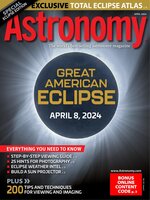 Apr 01 2024
Apr 01 2024
 Mar 01 2024
Mar 01 2024
 Feb 01 2024
Feb 01 2024
 Jan 01 2024
Jan 01 2024
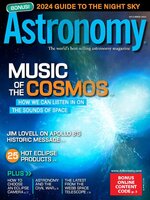 Dec 01 2023
Dec 01 2023
 Nov 01 2023
Nov 01 2023
 Oct 01 2023
Oct 01 2023
 Sep 01 2023
Sep 01 2023
 Aug 01 2023
Aug 01 2023
 Jul 01 2023
Jul 01 2023
 Jun 01 2023
Jun 01 2023
 May 01 2023
May 01 2023
 Apr 01 2023
Apr 01 2023
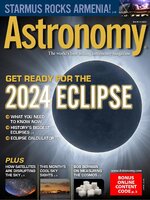 Mar 01 2023
Mar 01 2023
 Feb 01 2023
Feb 01 2023
 Jan 01 2023
Jan 01 2023
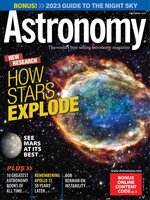 Dec 01 2022
Dec 01 2022
 Nov 01 2022
Nov 01 2022
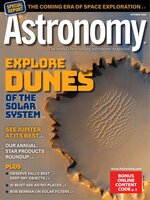 Oct 01 2022
Oct 01 2022
 Sep 01 2022
Sep 01 2022
 Aug 01 2022
Aug 01 2022
 Jul 01 2022
Jul 01 2022
 Jun 01 2022
Jun 01 2022
